In fact, I was smitten from the moment I first set foot — so much so that I moved to Portugal in 2016, and I’ve been regularly travelling around Portugal since.
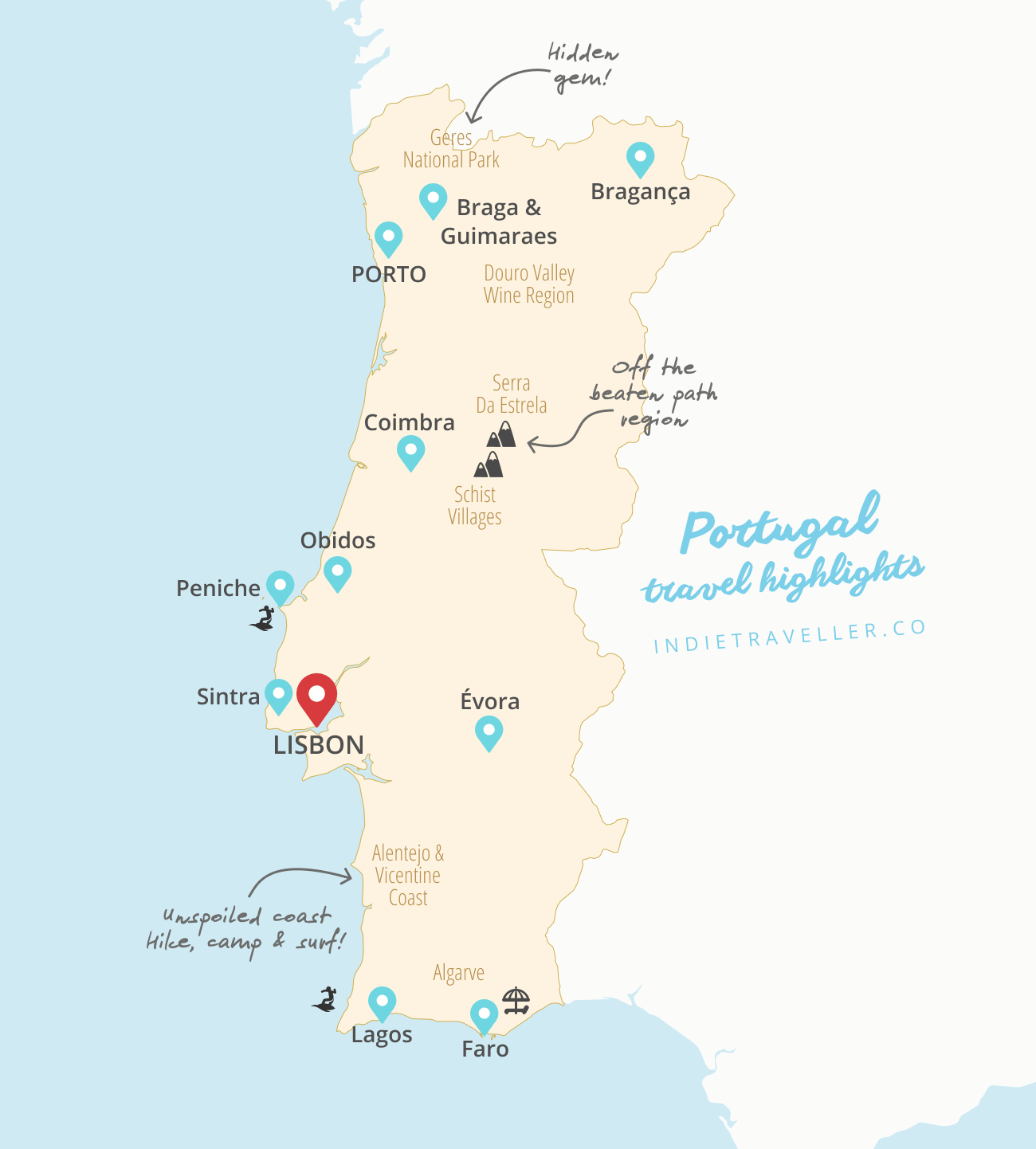
The following are often considered some of the best places to visit in Portugal. To help you out, I’ve also added labels such as ‘essential’ or ‘hidden gem’. Some places are just perfect for a first-time visit to Portugal, while others may be more of interest if you’re a completionist, live in Portugal, or just enjoy going off the beaten path. It’s a bit subjective, but it’s just to give an idea.
This Portugal travel guide focuses on the mainland, but the islands of the Azores and Madeira are also worth considering.
Plan your Portugal trip
CENTRAL PORTUGAL highlights
Many of the must-see places in Portugal are in and near the capital. If it’s your first time visiting Portugal, then this is a great place to start!
Lisbon
ESSENTIAL
Being the capital of one of the prettiest European countries, Lisbon is worth spending at least several days — especially if it’s your first time traveling to Portugal. Many visitors become instantly enchanted by Lisbon, in part thanks to its pastel-colored and delightfully tiled buildings, its vintage trams, and narrow cobblestone streets.
I highly recommend saving some time for a walking tour of central Lisbon, as it will give you a deeper appreciation of the city and its history.
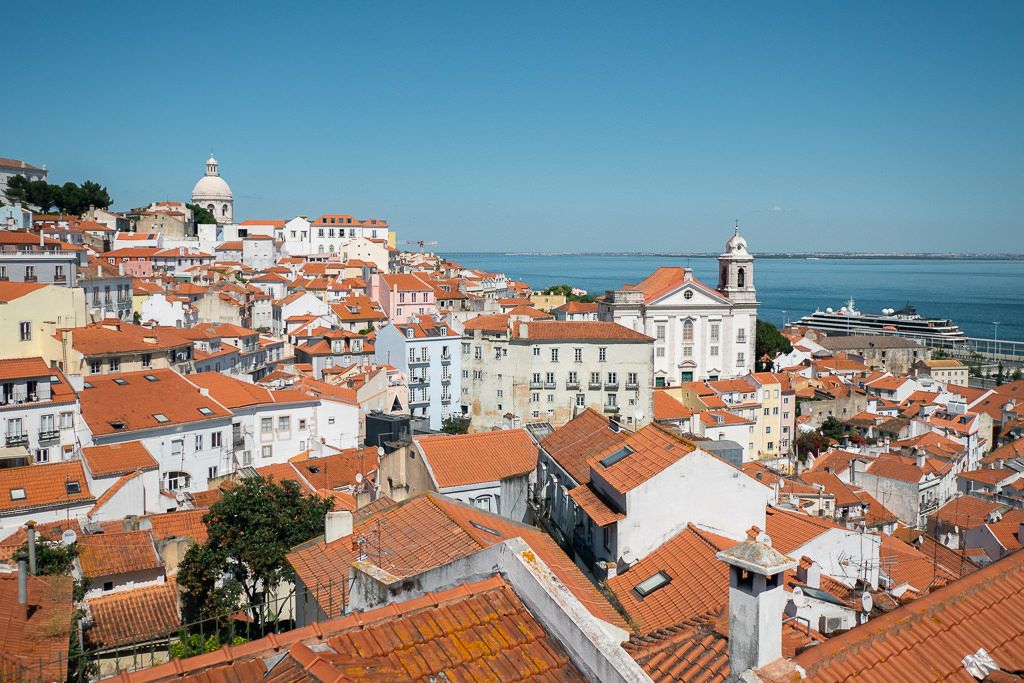
If you enjoy getting lost on purpose, then Lisbon is the city for you. Lisbon’s center is built around seven hills, giving you wonderful vistas at seemingly every corner.
The city is filled with interesting sights and museums. But experiencing the city is just as much about stumbling upon a cute cafe or finding some amazing street art while wandering without a specific goal.
If you can, try to avoid visiting Portugal or Lisbon in the busy month of August as it can be overflowing with tourists.
There is so much to say about Lisbon that I recommend reading my guide to the hidden gems in Lisbon.
Óbidos
ESSENTIAL
This picturesque Medieval hilltop village is one of the highlights of Portugal love thanks to its cobbled streets, white cottages covered in colorful wallflowers, and a still-intact outer castle wall.
This might even be Portugal’s prettiest village — and exploring its labyrinth of narrow streets is sure to keep you entertained for at least an afternoon.
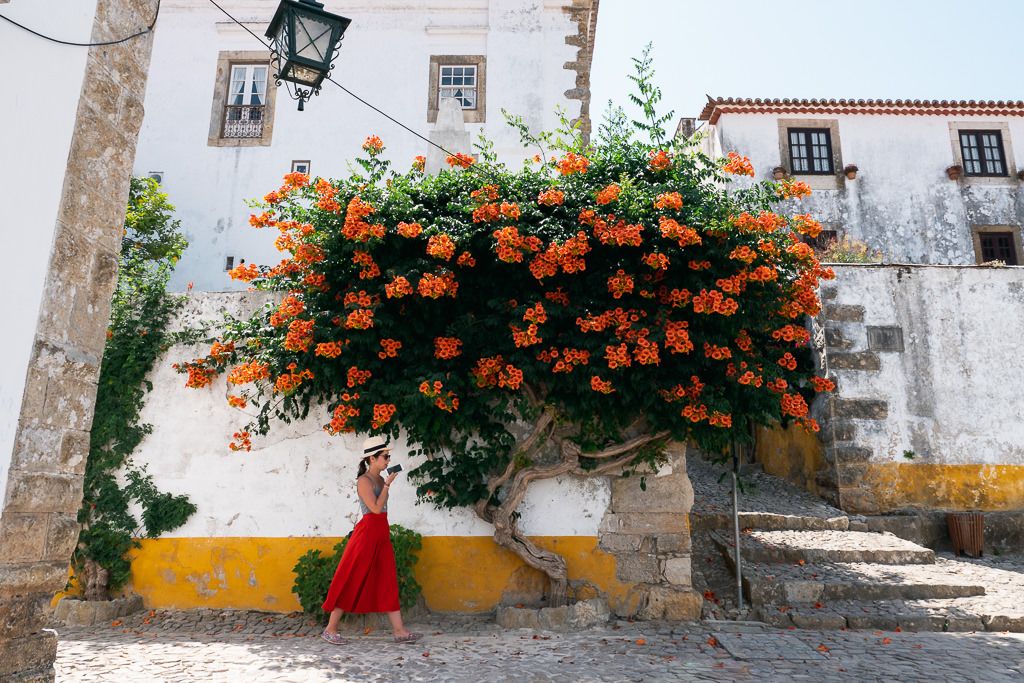
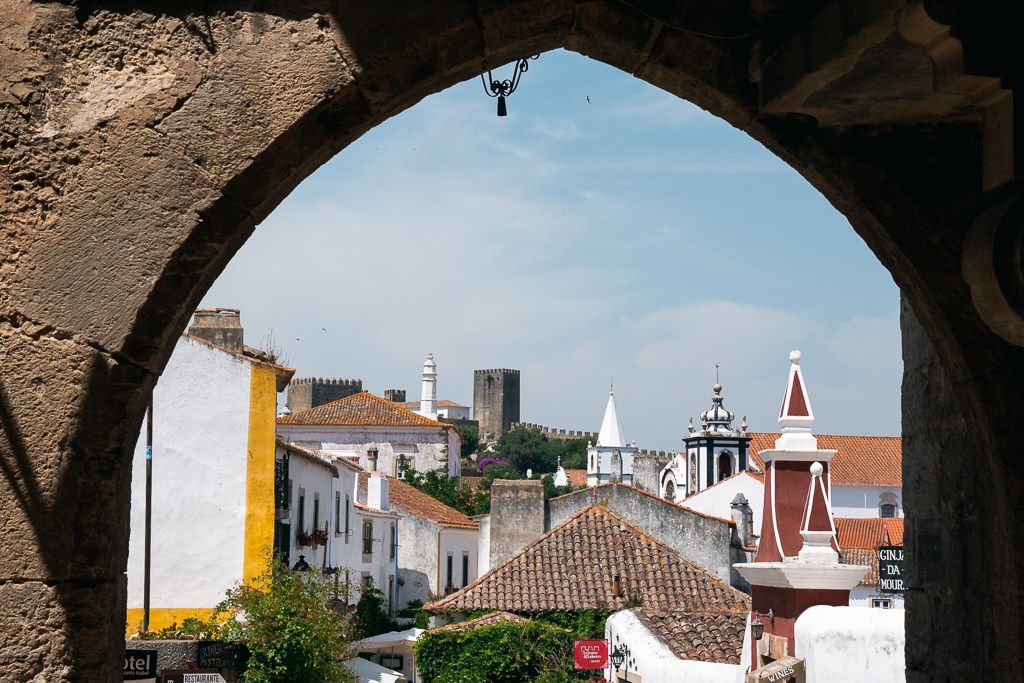
It can be busy at times, but if you simply go off the busy main street, you may find yourself transported to a different time. It’s the perfect little capsule of old Medieval Europe. Located about an hour’s drive from the capital, it makes for a great day trip from Lisbon.
Be sure to try a shot of the local ginjinha, a cherry liquor that originates in Óbidos and is sold in many cafes along the narrow streets.
You can reach Obidos by coach from Lisbon (about 60 minutes, plus about half an hour to get to the bus station). If you prefer to have a hotel pick-up with a guided experience, consider this private tour to Obidos and Mafra.
Sintra
ESSENTIAL
Over a hundred years ago lived a rich man who said to himself, “You know what? I’m just gonna make an insane opulent palace with gardens filled with hidden tunnels and cool secret stuff!”.
That man was Carvalho Monteiro, a 19th-century coffee and gemstone magnate, and it’s thanks to him you can now admire the Quinta da Regaleira.
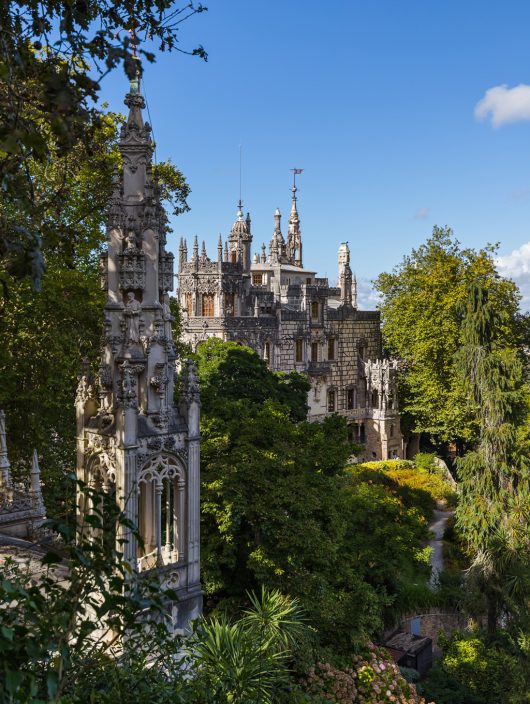
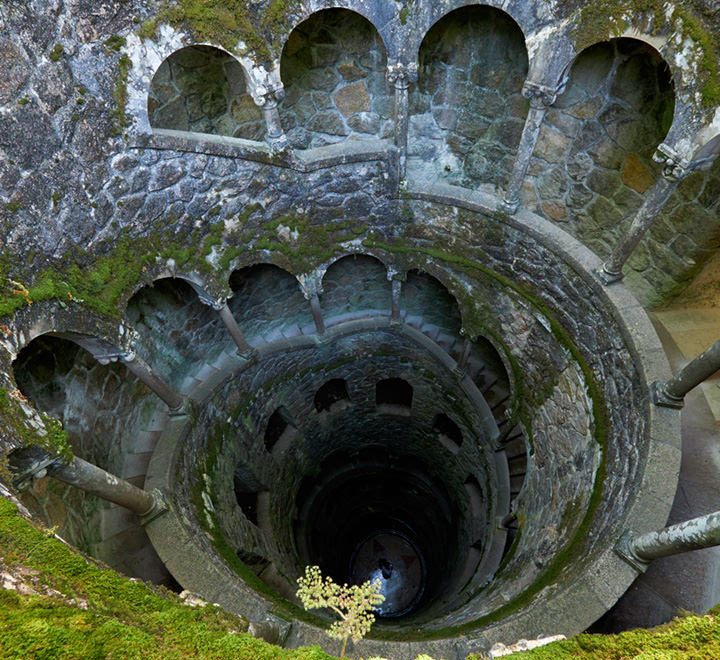
These gorgeous gardens in Sintra feature a variety of intriguing structures. Most famously, it has an underground tower with a spiral staircase, the purpose of which is unknown. Some have speculated it may have been used for mysterious initiation rites.
There are many more amazing things to do in Sintra, hence the reason it’s on just about every Portugal tourism guide. It’s home to a Moorish castle, numerous botanical gardens, and three different palaces, of which the Palácio da Pena is the most eye-catching. Sintra is easily one of the most magical places to visit in Portugal.
There is enough to see in Sintra for several days, but consider doing at least a day trip from Lisbon to see the absolute highlights. If you’re locally based, Sintra can keep you coming back for more. Some hidden gems (not often mentioned in travel guides of Portugal) include the gorgeous Monseratte Palace and the old tram line that runs to the beach of Praia das Maçãs.
Sintra takes about an hour to reach by train from Lisbon and the sights in Sintra are quite spread out. There is a lot to see and a guided tour can pack more sightseeing into a single day. This full-day tour to Sintra also includes the beautiful coastal town of Cascais.
Peniche & Berlengas Islands
HIDDEN GEM
The small seaside town of Peniche is a lovely place to visit on Portugal’s silver coast. Besides having a small fortress and a few small sights in town, Peniche is a major surfing hotspot, including for beginners.
Thanks to being on a small peninsula, there are often good waves on at least one or the other side. There are numerous surfer camps, schools, and boutique hostels in Peniche and the nearby Baleal.
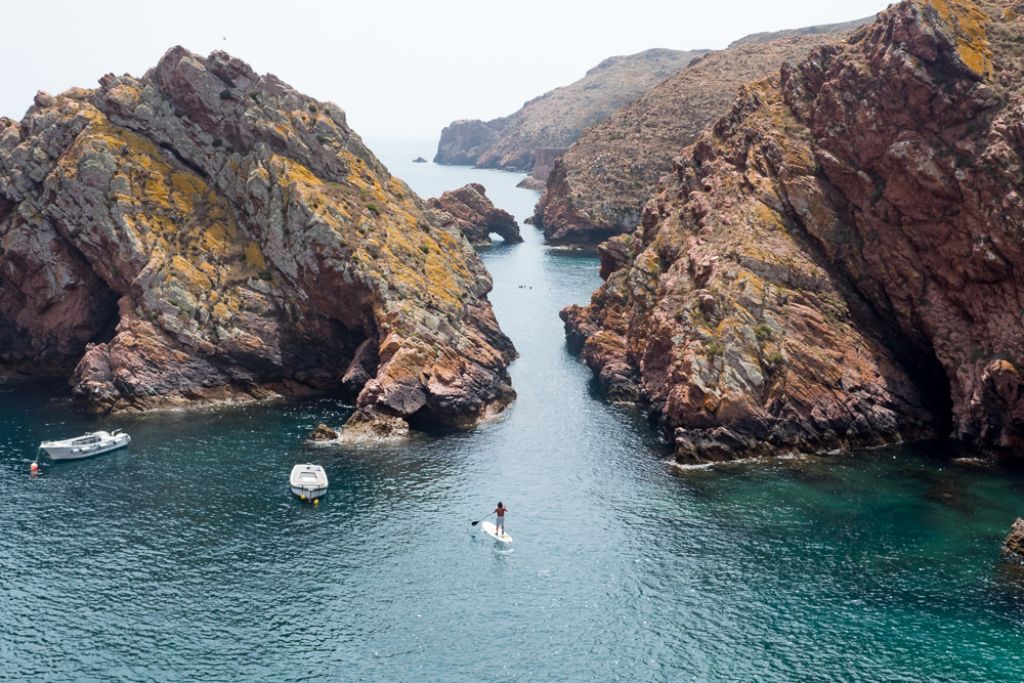
A 30-minute boat ride will get you to the Berlengas archipelago, which feels a bit like arriving on a pirate island. The rocky cliff scenery is perfect for SUP and kayaking trips. Plus, the Berlengas are known as the best place in mainland Portugal for scuba diving (just expect the water to be icy cold!).
There’s a gorgeous fortress on the island, the Fort of São João Baptista, which now serves as a basic pousada (hostel) where you can stay the night.
Ericeira
WORTH A TRIP
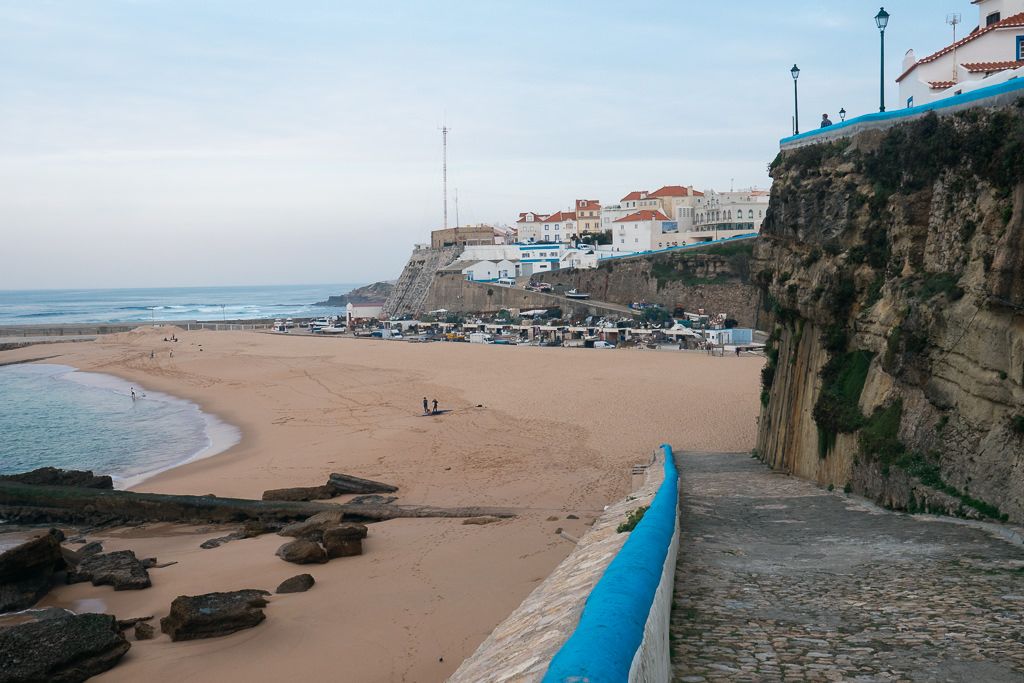
Ericeira is an odd combination of both a traditional Portuguese fishing village and an international surfing spot. Its whitewashed buildings with blue windowsills and fisherman’s port below the seawall make it one of the top Portugal recommendations if you want to stay on the coast.
The local surfing scene has brought many surf schools, hostels, yoga studios, and restaurants with international cuisine, too.
It’s a popular stop with surfers and backpackers and is recommended for anyone looking to stay in an authentic coastal town. You can join a day trip from Lisbon and combine your Ericeira experience with the nearby Mafra.
Mafra
WORTH A TRIP
Despite being a short drive away from Lisbon, Mafra is not quite as visited as many other places that feature on Portugal tourist guides. But the impressive 18th-century Mafra National Palace, with its long hallways and beautiful grand library, is definitely worth a visit. It’s striking how this huge UNESCO World Heritage site utterly dominates the small town that surrounds it.

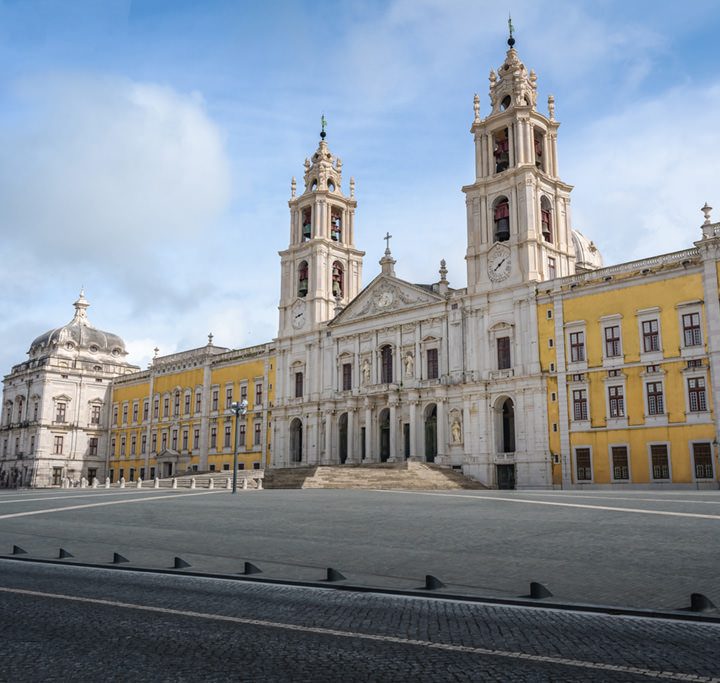
You can turn your visit to Mafra into a longer trip by going for a walk in the nearby Tapada Nacional de Mafra. It was formerly the royal hunting grounds and is now a natural park filled with wild boar and deer. Mafra is also a 15-minute drive from the lovely fisherman’s town and surfing hotspot of Ericeira, mentioned earlier.
Sado Estuary
WORTH A TRIP
About a 40-minute drive south of Lisbon, the estuary of the river Sado has several attractions worth checking out. This is especially the case if you’re based in Lisbon for a while and looking for somewhere off the beaten track.
The small city of Setúbal is worth a visit, especially to sample its famed fried cuttlefish. On Sunday in particular, the restaurants will be packed with locals gorging on this “choco frito” (which, as I quickly surmised, is not some kind of fried chocolate at all!). The castle ruins of Forte de São Filipe also make for a nice hike.
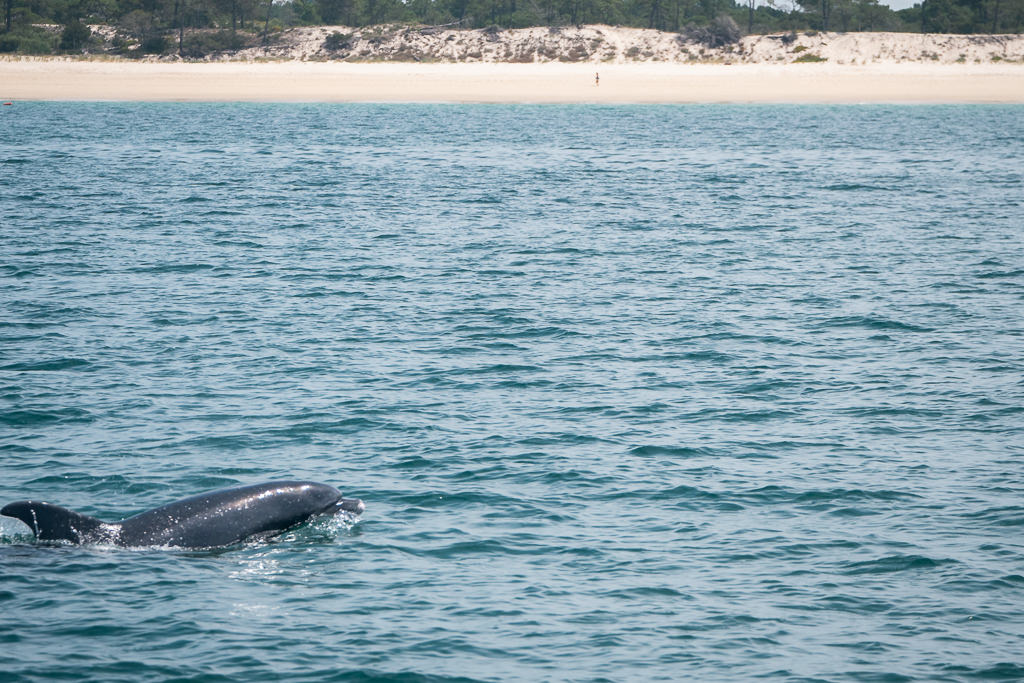
From Setúbal you can hop onto a catamaran for a dolphin-watching tour. A group of bottlenose dolphins lives up the Sado river so you are almost certain to spot them.
South of the estuary, Comporta is a remote fisherman’s village that, somewhat bizarrely, turned into a hippie chic destination well-known among wealthy celebrities. You wouldn’t be able to tell from this unassuming town, but there are some luxury eco-resorts spread around it that have made it an international destination. You don’t need to be a jet-setter to enjoy the tranquil surroundings though. The nearby beach is entirely undeveloped and stretches for kilometers on end.
Nazaré
WORTH A TRIP
Wondering where to visit in Portugal for the best surfing experience? This typical coastal town slash beach resort turns into a truly sensational place in winter when the waves crashing into its bay reach truly dizzying heights.
It’s Nazaré holding the record for the world’s biggest wave ever surfed — you can see some unbelievable videos of this 24.38m tall wave.

Nazaré has a nice beach backed by some dramatic cliffs that make it an nice summer destination on the western coast. But it’s especially worth catching the dramatic surfing competitions that take place between October and March, depending on the waves and weather conditions.
But the town is more than just an epic surfing spot, as it offers great food and some pretty stunning views. You can make the most of the epic scenery by joining a guided buggy tour through the surrounding fields and beaches.
Coimbra
ESSENTIAL
Halfway between Lisbon and Porto, Coimbra is Portugal’s main student city. It’s home to one of the oldest universities in the world, whose old campus is listed as a UNESCO world heritage site.
The university is still in use while its oldest buildings are now a museum. Don’t miss seeing the impressive colleges as well as the stunning gold-decorated Johannine Library filled with over 200,000 old books.
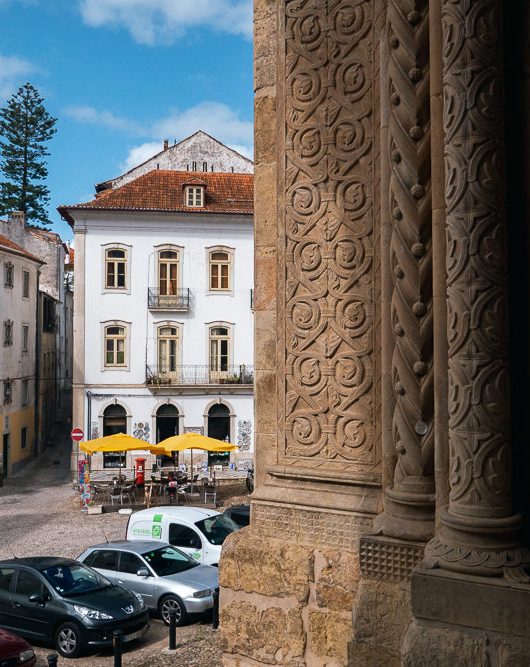
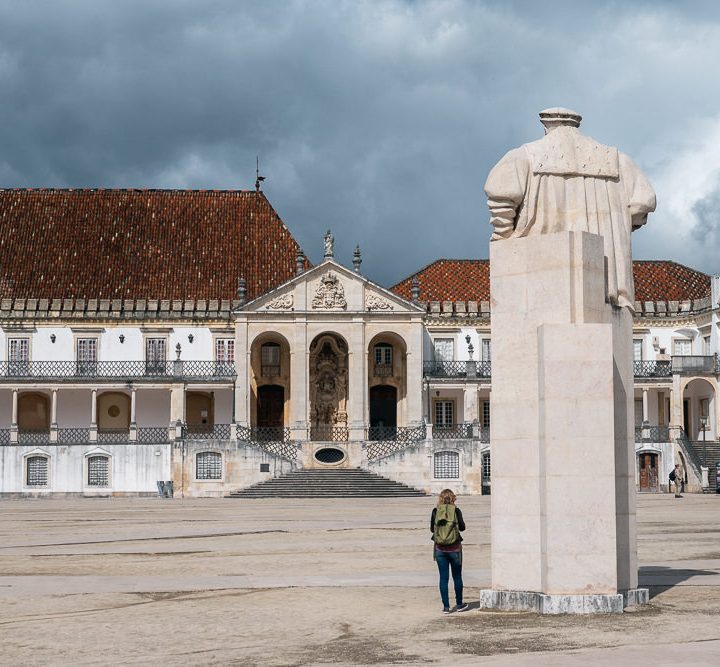
You may see students walking along in their traditional black-robed uniforms. It’s said that J.K. Rowling drew inspiration here for Harry Potter while she lived in Portugal and it’s easy to see why.
Coimbra can be seen in about a day, so it’s a great excursion if you’re traveling between Lisbon and Porto (it’s about midway on the train line between these cities). For a more leisurely visit, it can also be worth staying a night.
Serra Da Lousã
HIDDEN GEM
Serra Da Lousã is little known among international tourists, but this small mountain range near Coimbra is a great place to go. It’s perfect for hikes or simply enjoying a rustic stone house in the countryside.
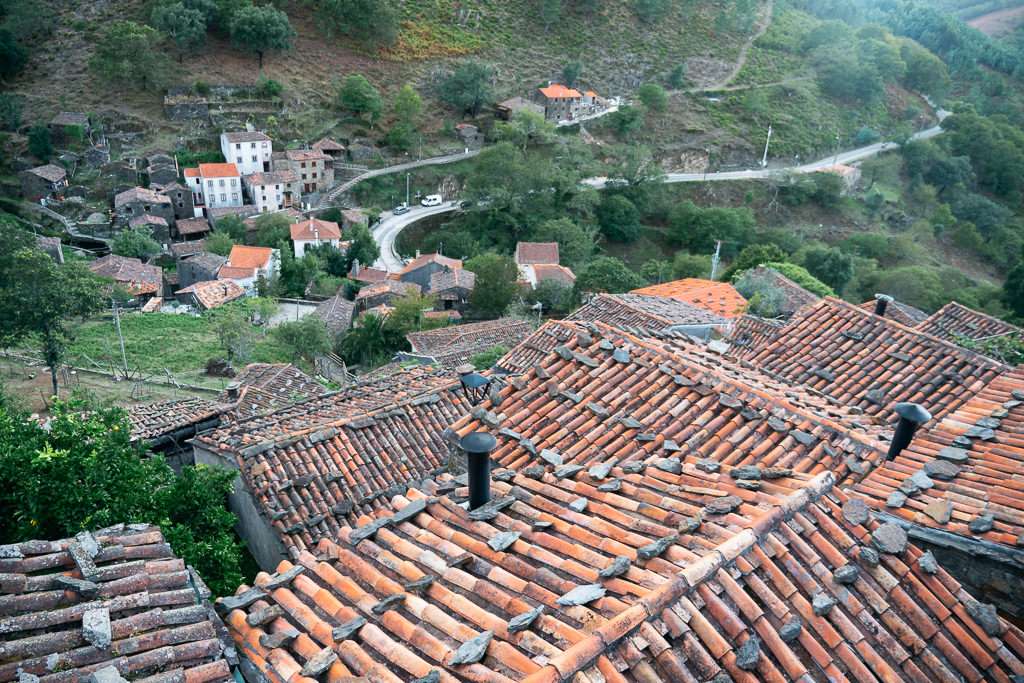
The region is home to villages with old houses made of schist stone. It looks quite different from the whitewashed and tiled houses elsewhere in Portugal.
Since the Serra Da Lousã receives a lot more rainfall than regions further south, the hiking trails are also blessed with lush vegetation. Plus, many of the paths are bordered by moss-covered stone walls, making it a Portugal must-see spot for nature lovers.
Serra Da Estrela (and around)
HIDDEN GEM
With an elevation of 1,993m, Estrela Mountain is the highest point in mainland Portugal. A road up the Serra to the highest point at the plateau at Torre makes for a nice drive. That said, I think it’s the surrounding region that is especially of interest.
A dozen villages, branded the Aldeias Históricas de Portugal, make for wonderful waypoints for a road trip through central Portugal. I especially liked the Medieval town of Sortelha, the mountain village of Piódão (pictured) that’s squished between terraced fields, and the cobblestoned fortress village of Belmonte.
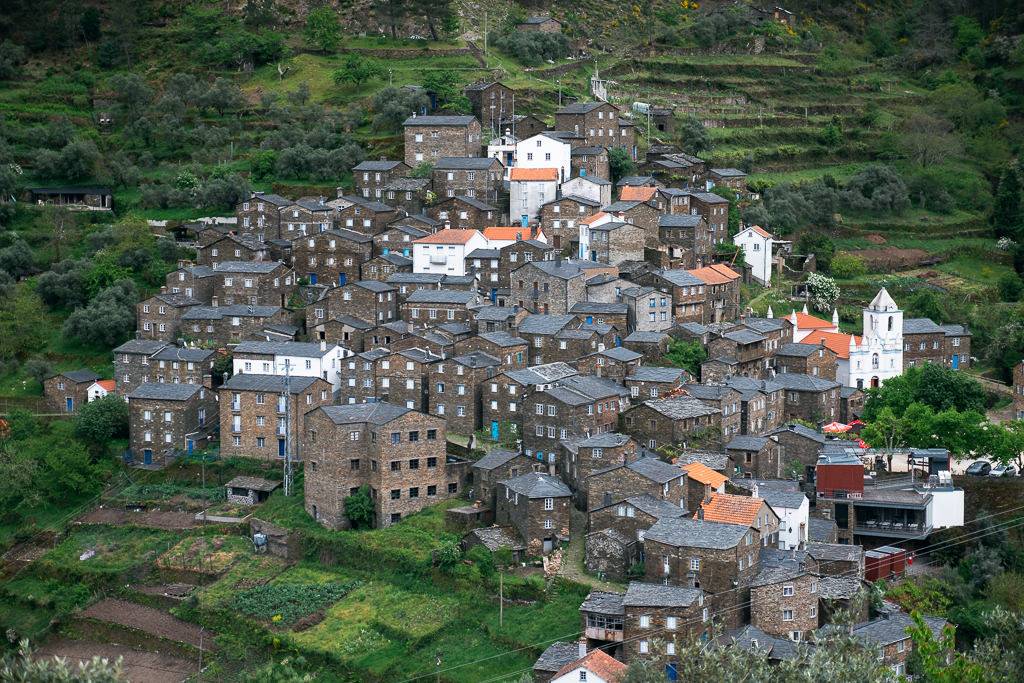
For one of the more unique Portugal highlights, travel to Belmonte. You can learn the fascinating history of a community of Jews who practiced their faith in secret during the Great Inquisition. My stay in Belmonte was made even more memorable by sleeping at the Convento de Belmonte, a hilltop convent turned gorgeous hotel with views of the Estrela mountains.
The small city of Covilha offers some other low-key attractions, such as an ethnographic museum and another giving insight into the region’s traditional wool industry.
Covilha has a direct train connection to Lisbon. This makes it a good starting point into the region, though from there, you’ll need a car rental, as there is little public transportation.
Monsanto
HIDDEN GEM
The small Medieval settlement of Monsanto is located along the border with Spain. It’s quite far from other popular destinations in Portugal, but it’s worth making the trip there if you have the time, as it’s an absolutely unique village.
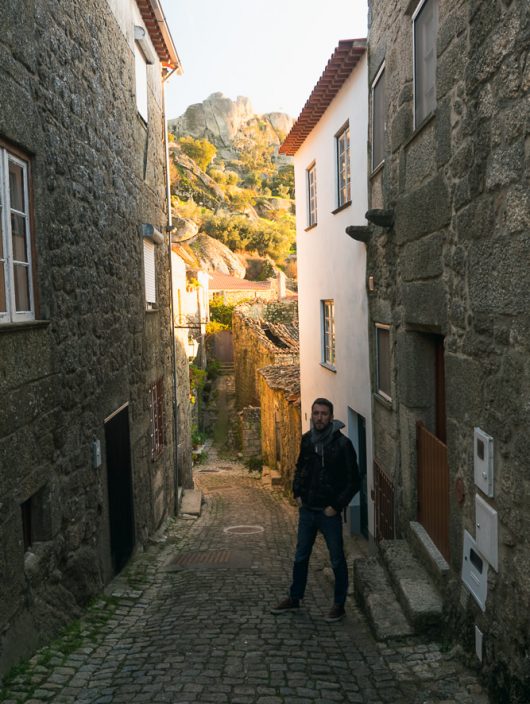
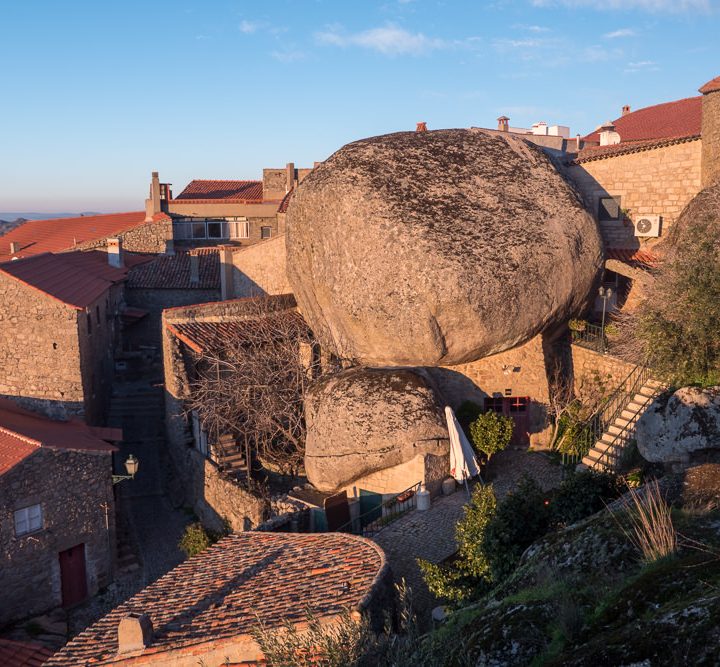
Its scenic location atop a granite mountain overlooking lush green valleys already makes it worth seeing. But what makes Monsanto truly special is that the streets are all squeezed in between the many granite boulders that poke out from everywhere.
Some buildings were built wedged in between boulders, and others were built awkwardly around them. A few houses even used the granite boulders as roofs, with little rooms excavated below them. I even stayed in a B&B with a granite boulder bursting right through the walls, creating a space for a fireplace beneath it.
A brief hike leads to a beautiful Templar castle, giving even more stunning views of the valleys below. The area around Monsanto is gorgeous as well, with olive trees and higgledy-piggledy farmlands with stone walls. Consider combining Monsanto with a road trip to the nearby Serra da Estrela.
More Portugal travel guides
- Read all about planning a backpacking trip in Portugal
- What to know before renting a car in Portugal
- Love to hike? View these 9 best hiking areas in Portugal
Sesimbra and Arrábida
WORTH A TRIP
Travel 45 minutes south of Lisbon to the small beach town of Sesimbra for a fun day trip. The town has a few larger hotels and holiday apartments along its edges, making it feel slightly like a resort. But its old center is very cozy and has some great marisqueiras (seafood restaurants).
In the summer, there are all sorts of water activities like kayaking, scuba diving, and stand-up paddleboarding. A castle on top of one of the hills gives you some wonderful views of the coast.
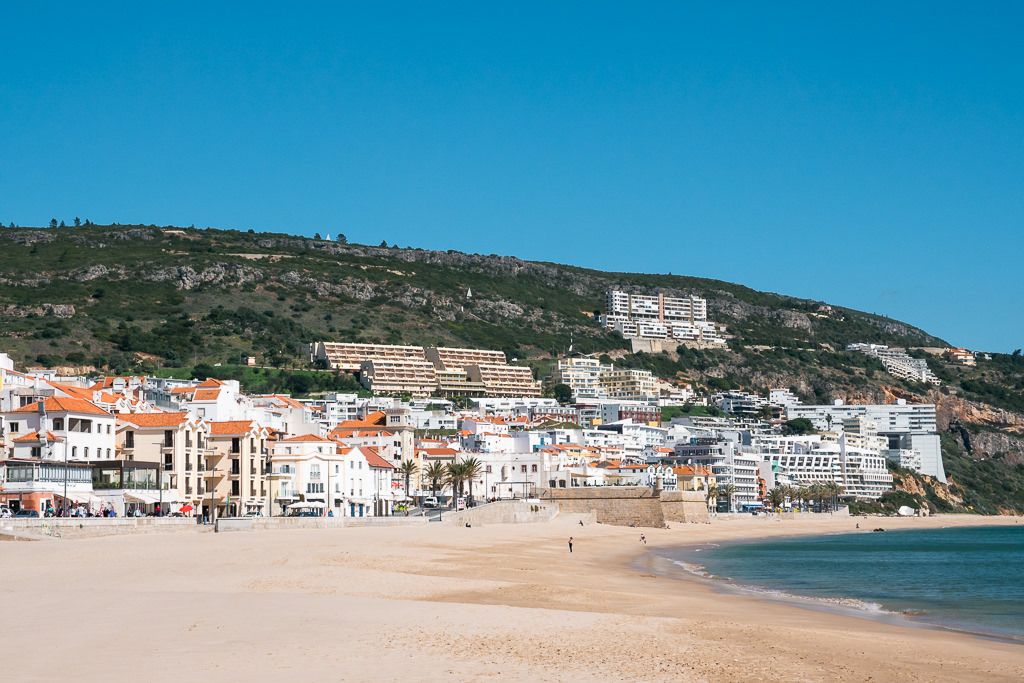
But the best bit of Sesimbra is its hidden cove called Praia do Ribeiro do Cavalo. It’s a Portugal must-see spot that only a few people seem to know about. It’s either a short drive (and hike down to the beach) or a 45-minute walk from Sesimbra. The sheltered cove is simply gorgeous and looks a bit similar to the craggy coves you’ll find in the Algarve region.
Another incredible beach near Sesimbra is Praia de Galapinhos, in the Arrábida National Park. It might well be the prettiest beach within easy driving distance of Lisbon.
NORTH PORTUGAL highlights
The north has some of the best destinations in Portugal. Since it can be a bit colder and wetter, it can be a bit less touristy than the sun-soaked Algarve. There are great areas for hiking and road trips, such as the gorgeous Gerês.
Porto
ESSENTIAL
Portugal’s second-biggest city is rather different from Lisbon. This is, in fact, a point of pride for the local Tripeiros (tripe-eaters, the nickname for Porto residents). They’ll talk you an earful about how much nicer, more helpful, and harder-working they are than those snobbish and arrogant banker types down in the capital.
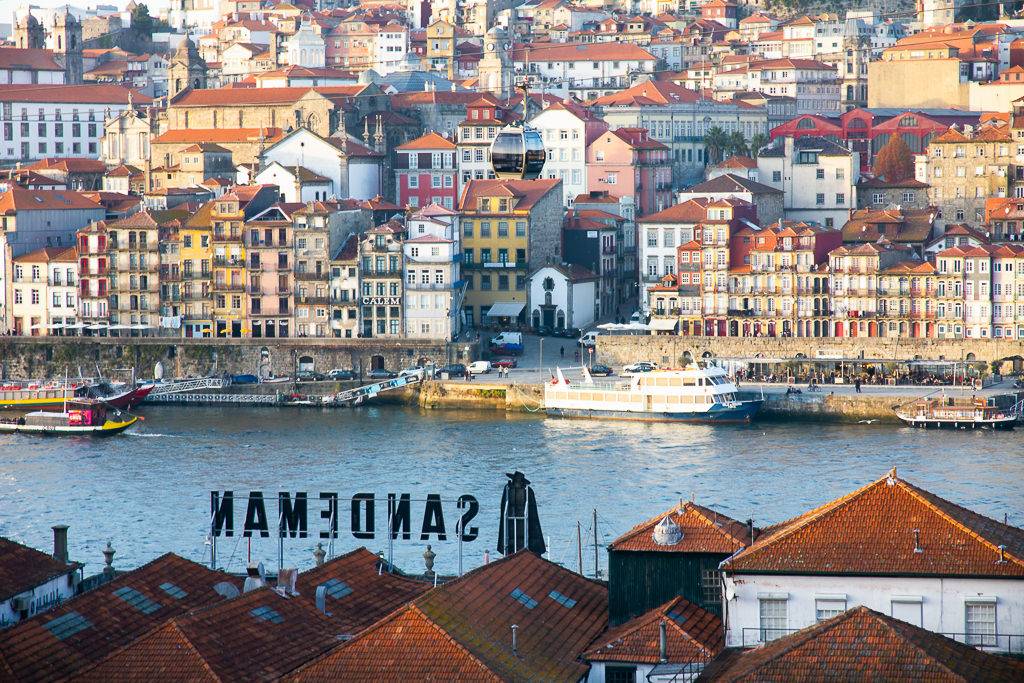
City rivalries aside, you can’t deny Porto’s wonderful unpretentious vibe. The northern capital shows its no-nonsense character while also claiming a buzzing cultural scene.
I always recommend doing a walking tour of historical Porto on your first day, as it will give you the best introduction to the city, its culture, and its history.
The riverfront quarter of Ribeira is a fascinating place, with its medieval streets ribboning out from the docks and narrow, colorfully tiled building facades popping up like a picture book over the port’s former warehouse cellars. Above it all looms the spectacular arched Dom Luis I bridge, built in the same period and style as the Eiffel Tower.
It’s an incredible location that really can’t be compared with anywhere else in Europe. You can see the main sights in Porto in about two days as this city is more compact than Lisbon. However, it can be worth staying longer if you use it as a base for trips into the region.
Pair all this with the great flight deals from budget airlines that fly into Francisco Sá Carneiro Airport, and you’re in for a real treat.
Guimaraes & Braga
WORTH A TRIP
These two northern cities are just a 20-minute drive apart, making them easy to combine.Braga is known mainly for its many churches and cathedrals. There is a local saying: “Porto works, Lisbon shows off, and Braga prays.” Don’t miss the Sanctuary of Bom Jesus do Monte, a huge staircase leading to a hilltop sanctuary that’s a UNESCO World Heritage site. There is a funicular if you prefer not to walk up all the steps.
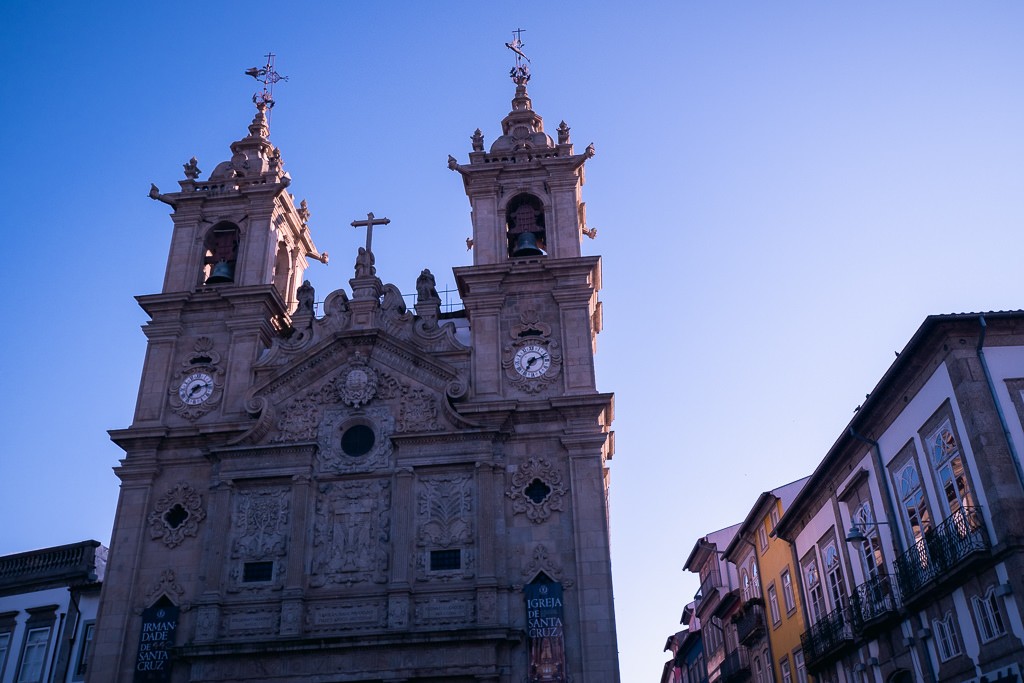
The small city of Guimarães is known as the “cradle of Portugal”, as it’s from here the country grew during the Middle Ages. I was delighted by Guimarães’s cozy town square area, particularly at night when the adjoining houses and their windowsills are contoured by countless fairy lights. Even though I visited in summer, I felt like I had arrived at some kind of Christmas market.
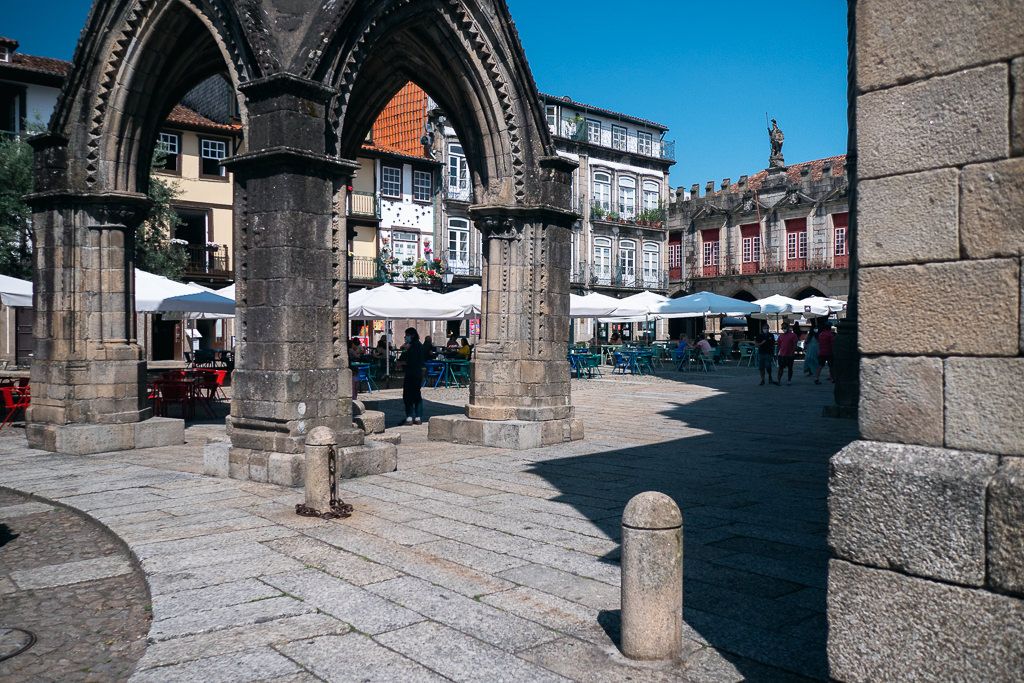
Thanks to its stone archways, half-timbered houses, and a Gothic temple at the center of the square, Guimarães’s historical core feels a lot like a Medieval fairytale place. It has at most a day’s worth of sights, but Guimarães is a highly romantic and underrated little place with lots of authentic atmosphere.
Gerês National Park
HIDDEN GEM
Hugging the northern border with Spain, Gerês is Portugal’s most protected natural area. Relatively unknown among international tourists, it’s an amazing region for hiking as well as exploring on a road trip.
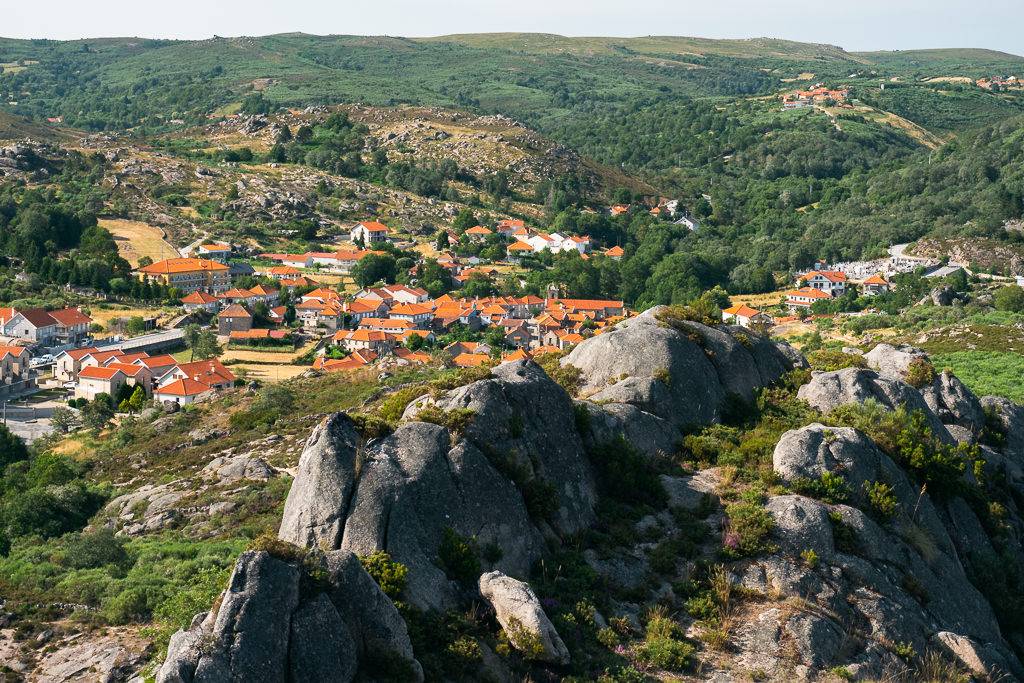
Among the flowing hills dotted with granite boulders, you can find many traditional stone villages. There’s plenty to see as you drive along the rural roads where wild horses and Cachenas — an ancestral cow breed — roam free. Soak up the many lookout points, waterfalls, castle ruins, and the impressive Sanctuary of Peneda along the way.
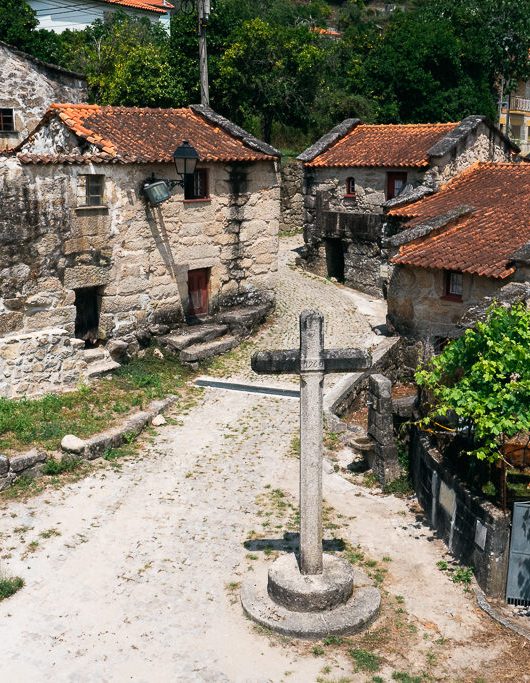
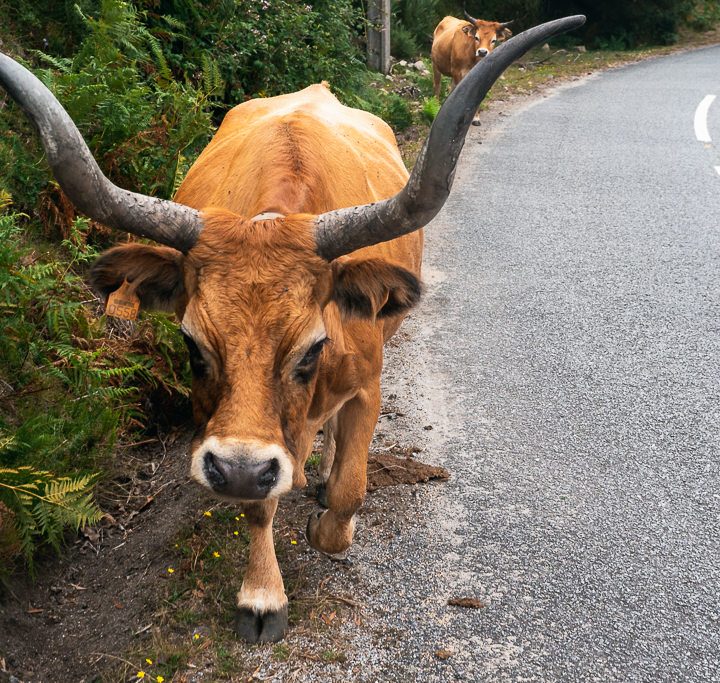
This is a delightful little slice of Portugal, especially if you like places that are a bit off the beaten track. Small towns like Soajo and Lindoso, typified by their historic stone grain silos built on a central mound, are lovely to visit or to stay overnight. I especially love the wonderfully remote Pitões das Junias, close to the border with Spain, which is utterly authentic and has some great local hiking trails.
Gerês Town (Vila do Gerês) is the region’s jumping-off point. This old spa town is rather pleasant, and the adjacent artificial lake is a popular spot when visiting Portugal, thanks to its water park and kid-friendly beaches.
A Selina hostel brings digital nomads to this area, too. But it’s the inner parts of Gerês that I think are most special and make for a perfect road trip. It’s best to have your own vehicle as there isn’t really any public transit, but you can always join a tour from Porto if you’re short on time.
If you do have time, you can stay in a wide range of rural and eco-friendly accommodations.
Douro Valley
The Douro River runs from Porto in the west all the way to the border with Spain in the east. It’s one of Portugal’s most fertile areas and is blanketed in port wine vineyards.
There are several ways to explore it as well. You can take a road trip (such as along the N222) or an all-inclusive river cruise from Porto. Or consider taking the spectacular train journey of the Linha do Douro, which features 20 tunnels and 30 bridges and hugs the river for most of the way.
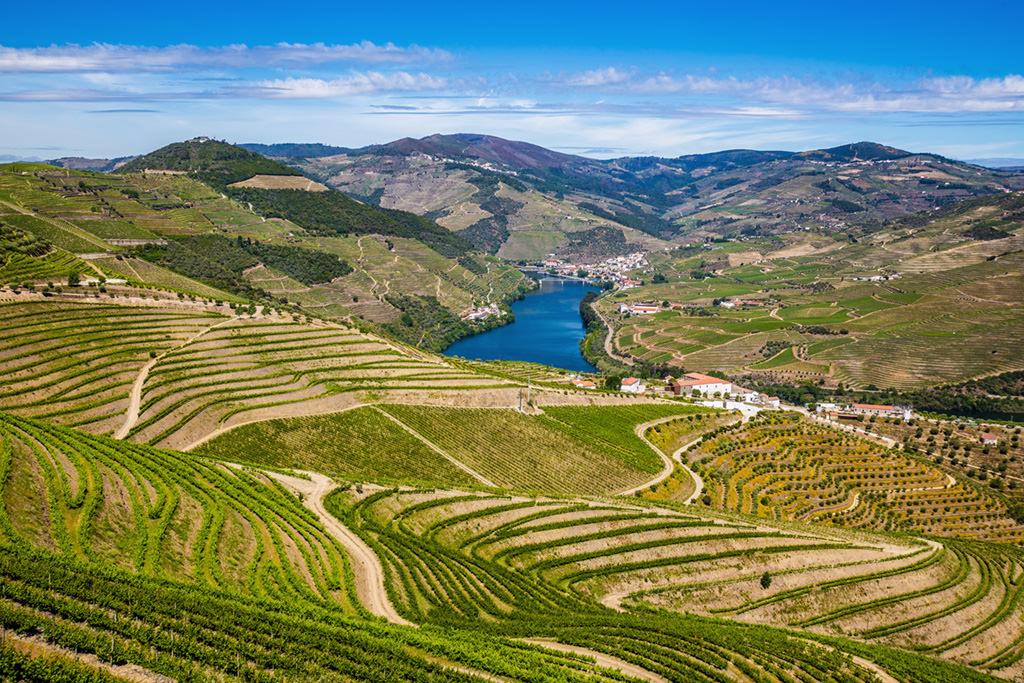
Rural quintas (traditional farms) turned into B&Bs or boutique hotels allow you to stay in charming accommodations along the way. One of the best things to do in the Douro is to visit some of the terraced vineyards for a wine tasting.
There’s more to Douro than just wonderful landscapes with vineyards and groves of orange and olive trees. You’ll also find numerous villages, castle ruins, chapels, and religious sanctuaries throughout this region. In Côa Valley, you can also see one of the largest examples of paleolithic cave art in Europe, estimated to have been created around 23,000 years ago.
Viseu
WORTH A TRIP
When people travel Portugal, this small hilltop city is often overlooked. But I really enjoyed strolling through its historic quarter with the Romanesque and Gothic Sé (Cathedral) as its centerpiece.
There are some small museums, and the local tourist office has plenty of information on nearby walking trails, though the main joy is just to be in a pretty Portuguese city unspoiled by tourism. It has all the cute squares, tiled buildings, and beautiful street art you may come to expect from a Portuguese city!
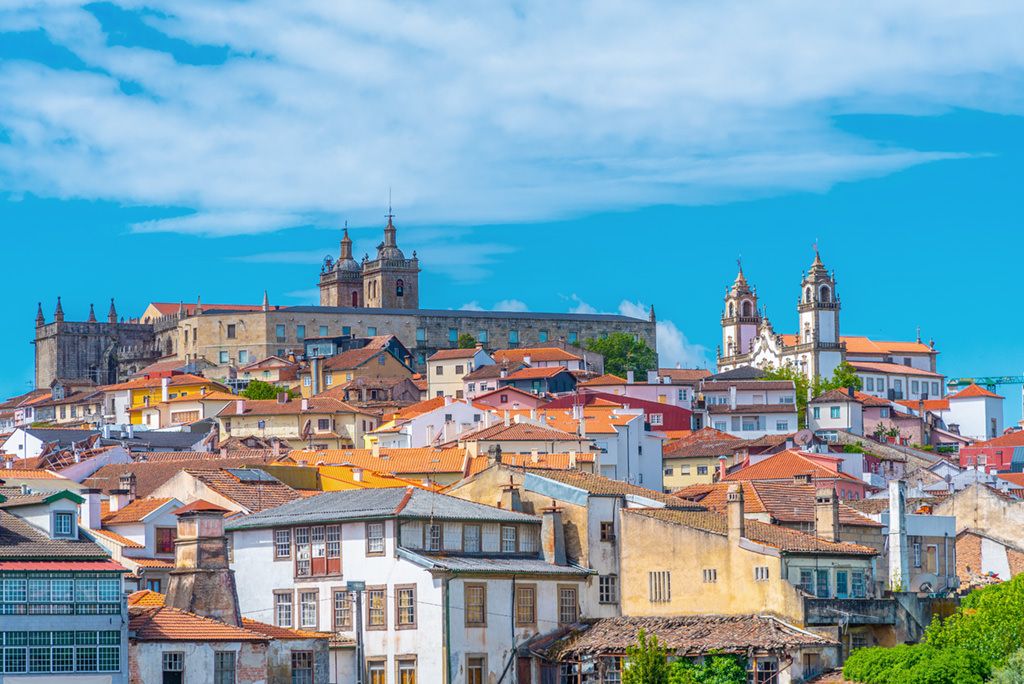
It may not have enough sights for a trip on its own, but Viseu makes for a lovely stop on a trip through Central Portugal. Consider a visit on your way to the Douro Valley or the Serra da Estrela.
Aveiro
WORTH A TRIP
Aveiro pitches itself (quite overenthusiastically) as the ‘Venice of Portugal’. Why? Because it has a single canal running through it where a number of colorful boats, known as “moliceiros”, can take you out and around (these boat rides take about 45 min).
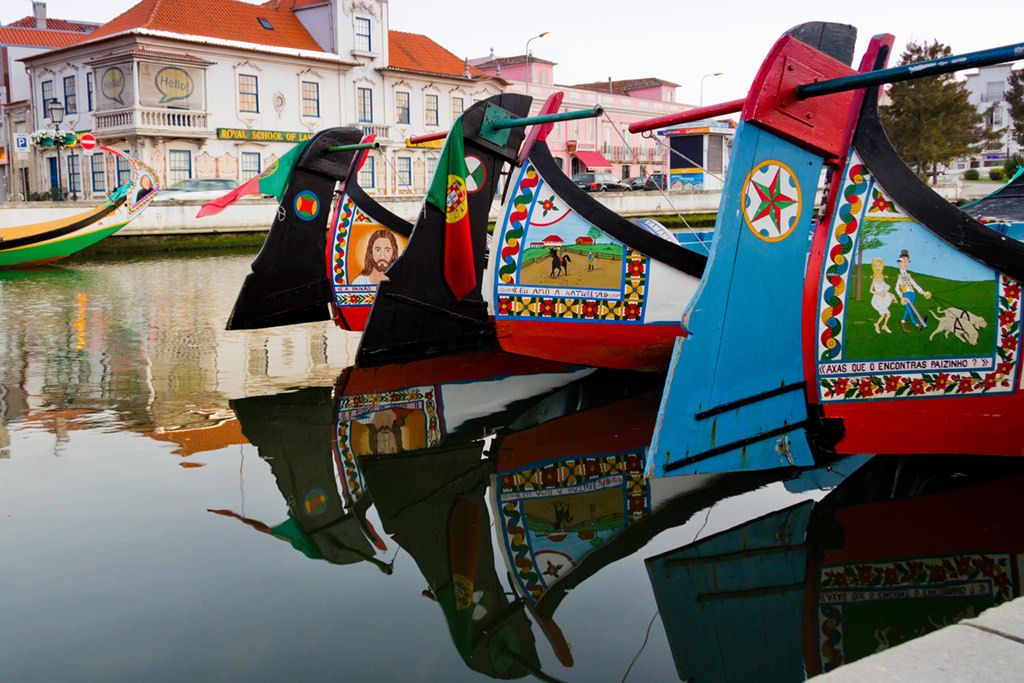
Okay, so keep your expectations in check, because it’s not truly like Venice. But Aveiro is definitely a wonderful place for a leisurely day out. Stay for lunch, a stroll through the Old Town, and a boat ride on the canal.
The nearby Costa Nova is a lovely stretch of beach known for its colorfully striped houses. Praia de Mira, further south, is nice to check out as well.
Arouca
The area of Arouca south of Porto has drawn much attention lately for having established the world’s longest pedestrian footbridge. With a length of 516 meters, it is suspended 175 meters above the Paiva River, connecting to several hiking trails through the Arouca Geopark.
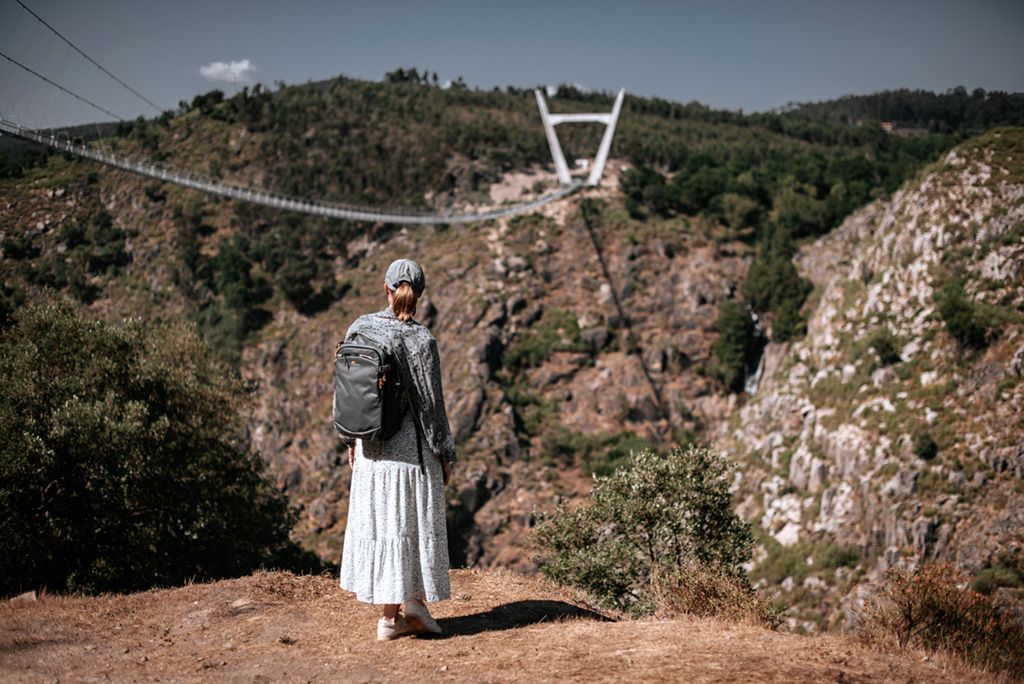
Besides the bridge, there are various rural places and small sights to check out, most of which are very nicely represented in this illustrated map. One interesting attraction is the 8km stretch of wooden walkways that run through a part of the Paiva river valley.
Much like Gerês further north, Arouca is a great destination in Portugal if you love to be in nature, check out smaller sights, and have a true Portuguese experience.
SOUTH PORTUGAL highlights
Suppose you’re wondering what to see in Portugal’s southern regions; it’s mainly known for its beaches and epic rock formations along the coast. The Algarve is a popular resort area, while the Vicentine coast is less developed and wilder.
Vicentine Coast
HIDDEN GEM
The Costa Vicentina is one of Portugal’s real treasures. Referred to as one of the last strongholds of the wild European coast, this protected and scarcely developed region offers some of the best opportunities for hiking, surfing, and campervanning. Running all along the west coast above the Algarve, the Vicentine Coast is dotted with charming villages and various forms of eco and rural accommodation.
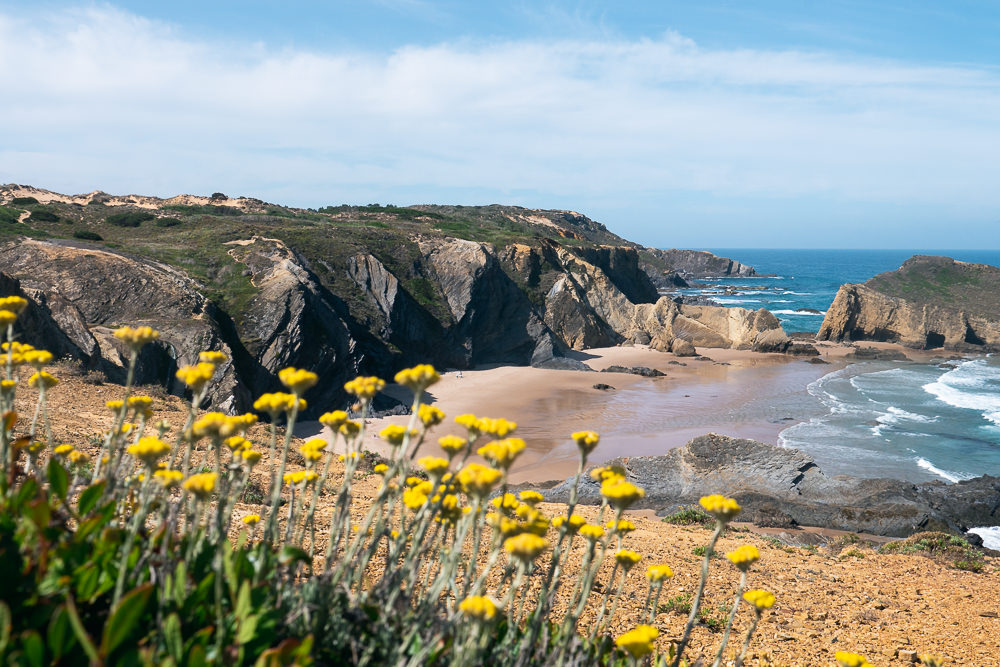
Many travelers end up here for the Rota Vicentina, a pair of hiking trails of increasing renown. Its Fisherman’s Trail follows the coast with its many gnarly limestone cliffs, while the less-hiked and underrated Historical Way snakes through the interior. With over 750km of trails to choose from, it’s definitely one of Portugal’s best areas for hiking.
Spring is the best time to hike the Fisherman’s Trail, as numerous storks flock to the area, building nests on the rocky cliffs. It’s possible to do single-day hikes, but it’s best experienced as a multi-day through-hike, giving you the opportunity to add relaxing beach days all along the way.
If you enjoy unspoiled places with only local and small-scale accommodation, then you will definitely love the Vicentine Coast.
Sagres
HIDDEN GEM
High up on the cliffs on the very southwest tip of Portugal, you’ll find the sleepy surfer town of Sagres. The cliffs around the Fortaleza de Sagres are a must-see at sunset, especially when the tide brings in heavy waves that crash onto the rocky shoreline.
With so many surf schools around, you can even take your chance to ride a few of those waves. Read more about the Algarve for surfers here.
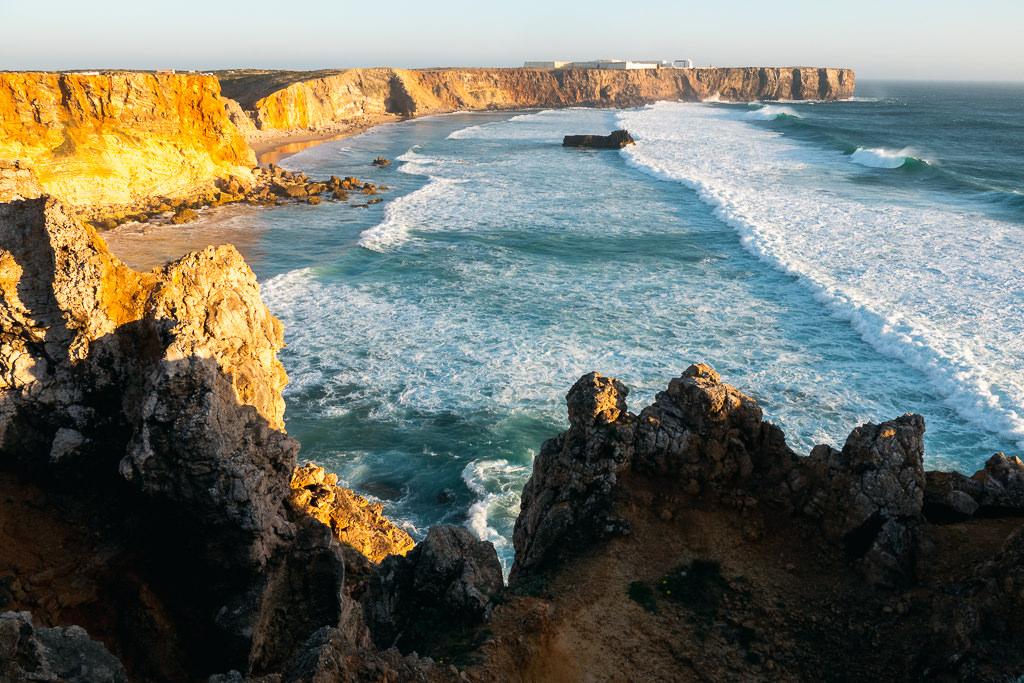
Sagres is closely connected to Portugal’s Age of Discovery, as it is where Henry the Navigator built his first nautical school. Nearby, Cabo de Sao Vincente is notable for being the most Westerly point of mainland Europe.
Sagres is on the Rota Vicentina hiking trail, and its end-of-the-world makes it a perfect endpoint to a long trek (I found it a bit reminiscent of Fisterra at the end of El Camino del Santiago in Spain).
Lagos
ESSENTIAL
The small city of Lagos (pronounced laa-goosh) is one of the nicest bits of the Algarve. It’s the place I usually recommend visiting if it’s your first time in the south of Portugal. Lagos has an attractive old town, it’s near some of the coast’s most spectacular cliffs, and it can be easily reached by bus or train if you don’t have a car. It’s a great base from which to enjoy the many things to do in the Algarve.
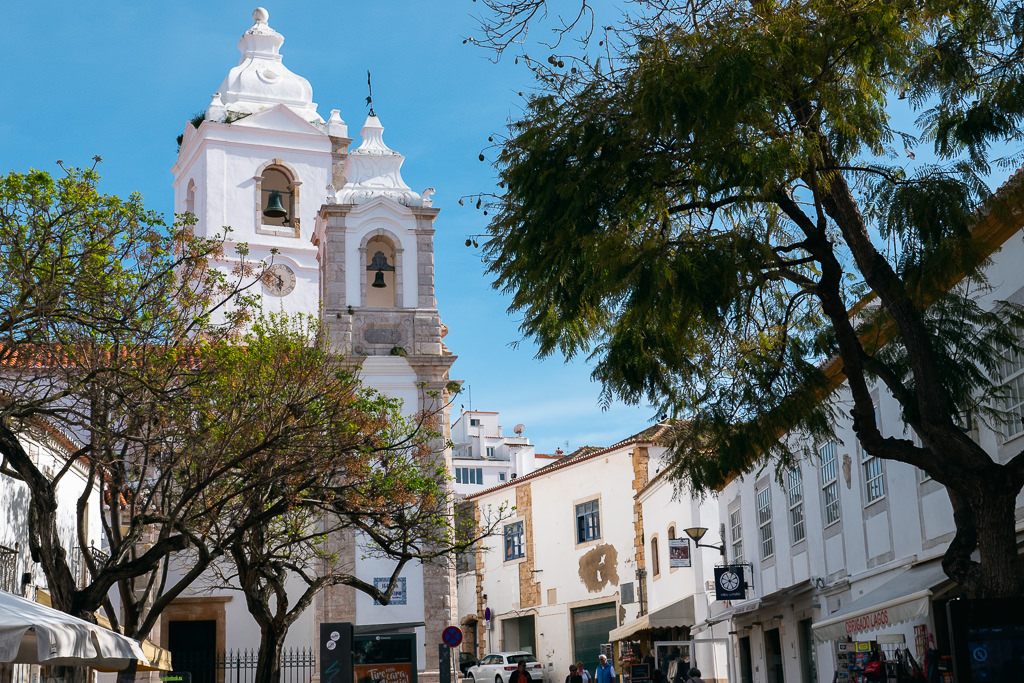
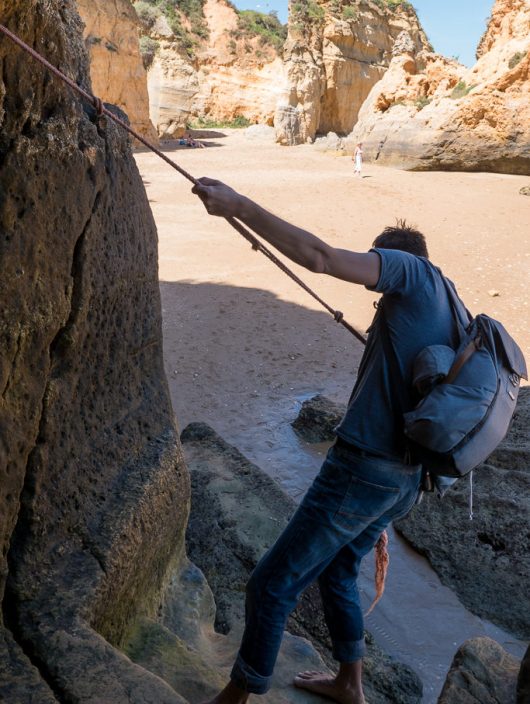
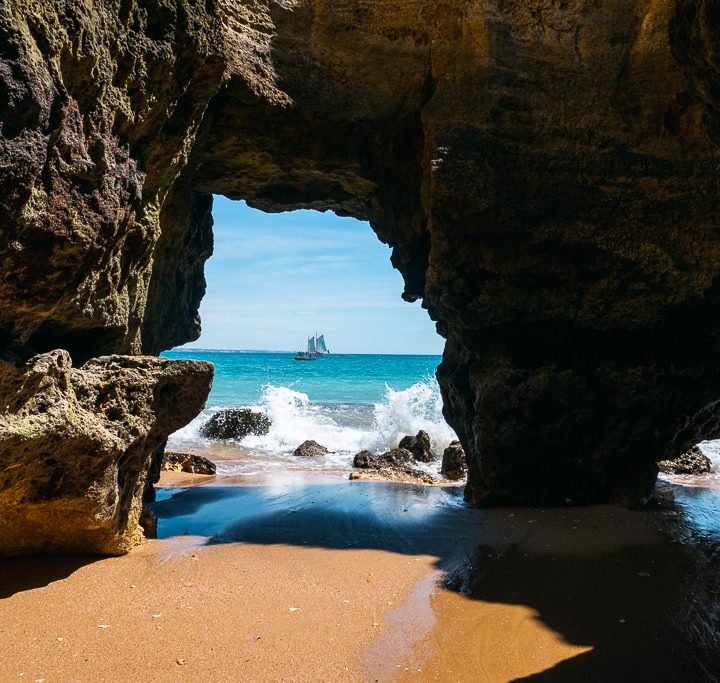
Its southern beaches are really fun as they are all amid tall limestone cliffs, with several sea caves and other passageways connecting them. These beaches are best visited outside the July-August high season as during this time they do get very cramped. Luckily there is also the Praia de São Roque to the east, a wide sandy beach that offers more space.
Évora
WORTH A TRIP
The small town of Évora is in the middle of Portugal’s hot and dry Alentejo, a region filled with cork oaks and vineyards. Évora is mainly of historical interest, with sights including several churches and cathedrals, two museums displaying religious artifacts, and the crumbled pillars of a Roman temple.
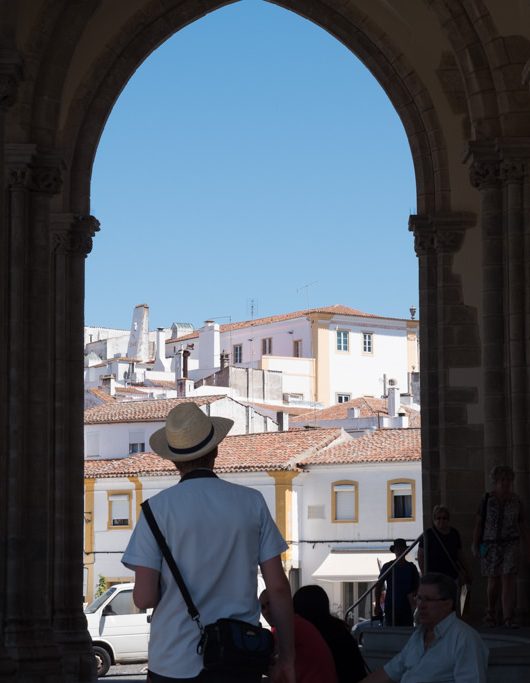
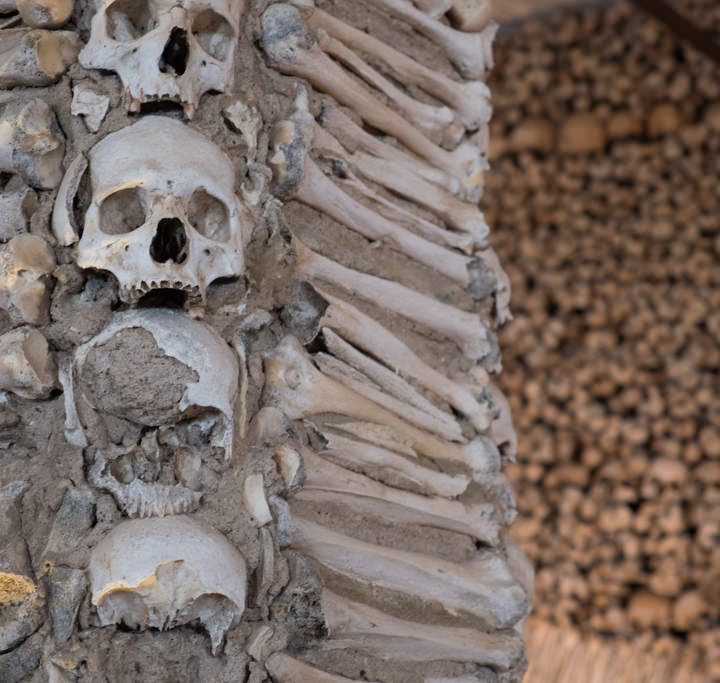
Enjoy its lovely whitewashed houses with yellow windowsills. And don’t miss the Chapel of Bones, which is literally decorated with bones, skulls, and even entire skeletons hanging from the walls. It was created by monks as a rather on-the-nose reminder of our temporary existence.
Carvoeiro
The small town of Carvoeiro is a wonderful spot in the Algarve — but do go outside of August if you can, as its small beach does get packed during this busy month. But if you’re looking for a lovely small-scale place to stay in the Algarve, it’s especially worth booking a nice B&B or hotel in Carvoeiro in spring or autumn.
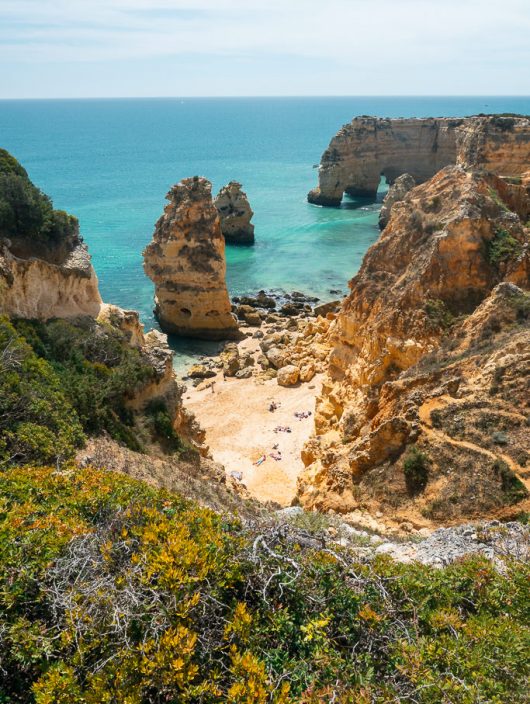
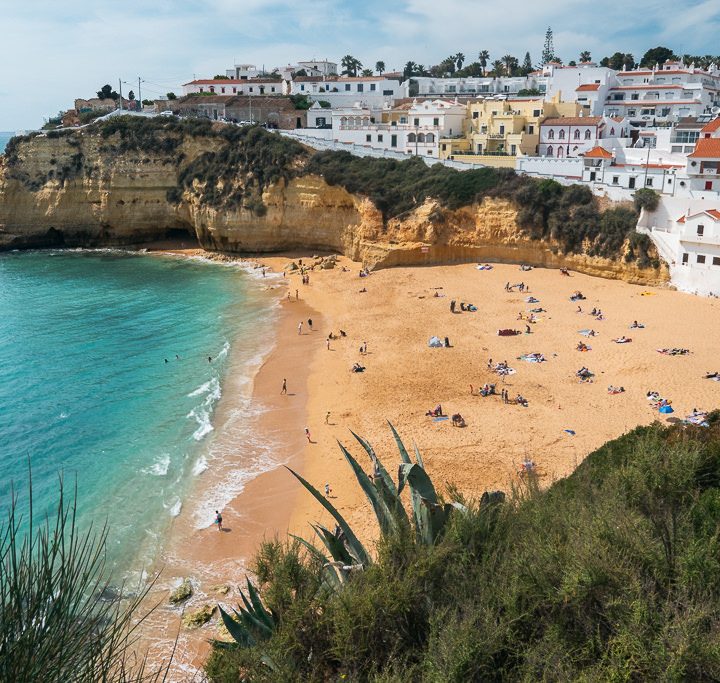
Carvoeiro is near some of the Algarve’s most impressive cliffs and coves. The whole coast is in fact scattered with coves, caves, and other hidden places, mostly best seen on a boat tour. The ultimate highlight is the Benagil cave, an absolutely stunning sea cave. Boats regularly depart from Carvoeiro’s small beach.
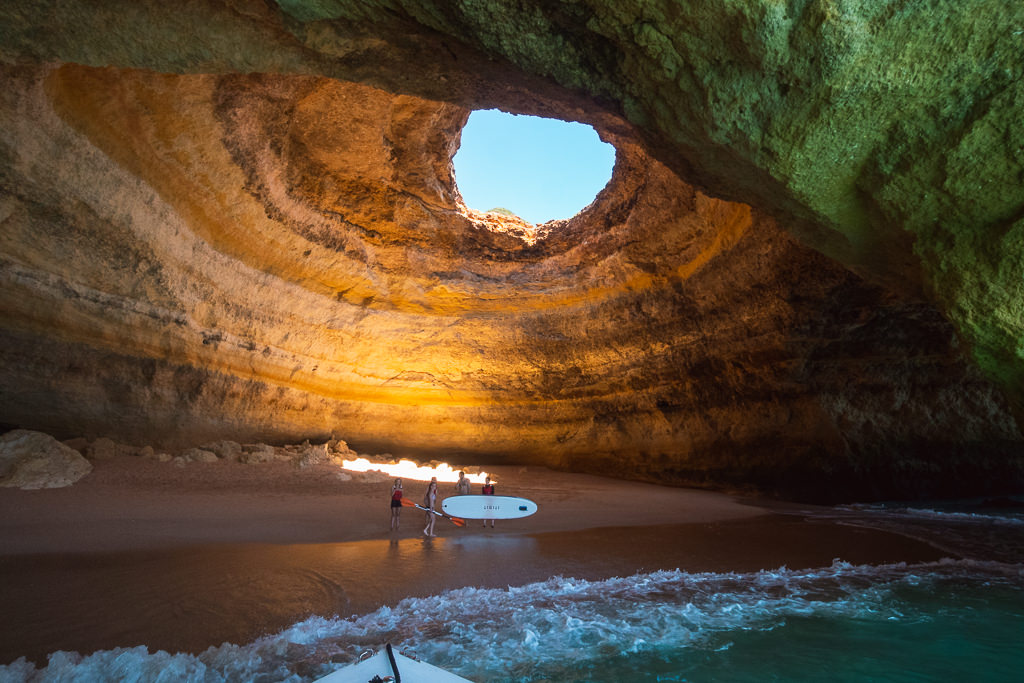
Alternatively, you can go on a sea kayaking tour, letting you explore all the coast’s gorgeous limestone features in a unique way. One such attraction worth seeing is Elephant Rock (a double limestone arch with its pillars in the sea). You can also follow the walking trails that run all along the coast.
Faro
For many foreign tourists, Faro is simply where they arrive by air as it has the Algarve’s only international airport. Many skip the small city as it is not directly on the beach. Yet Faro makes for a wonderful base, having a lovely cobblestoned old town. Ferry services can take you via a coastal lagoon (home to flamingos and other birds) to a very long sandy beach, which doesn’t get too busy even in the high season.
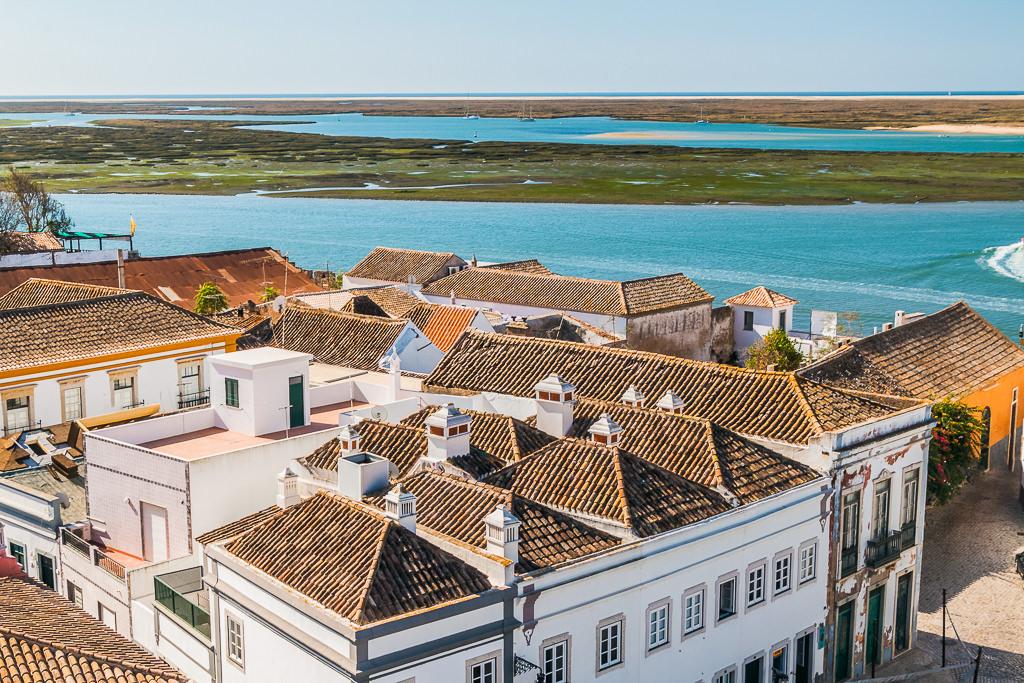
Faro may lack the dramatic limestone cliffs of Lagos and elsewhere in the Algarve, but it’s a wonderful destination for sun-seekers without any of the overdevelopment of places like Albufeira. It’s conveniently reached from Lisbon, Seville in Spain, or from its small airport.
Final thoughts on my guide to Portugal
Still not sure where to travel in Portugal? Then, have a look at my guides to Portugal for further inspiration. I’m fairly certain you’ll find something to inspire your next Portuguese getaway.
Some links may be affiliate links, meaning I may earn commission from products or services I recommend. For more, see site policies.
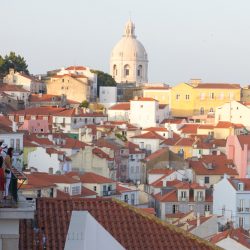
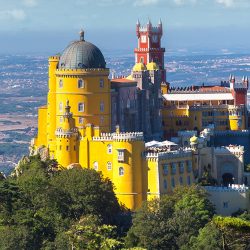
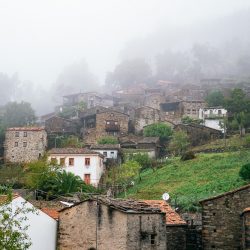
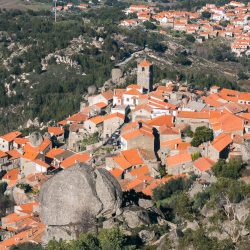
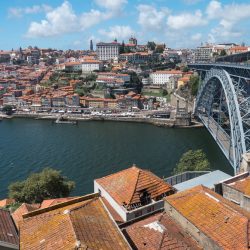

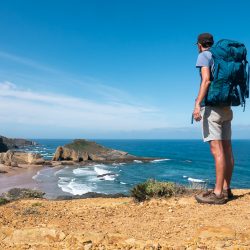
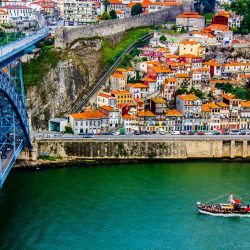




Great list! We loved portugal! Especially Porto and our day in Coimbra was a highlight!
It’s a piece of heaven
Hey Mark, I have gone through your blog just now. I should admit that it is inspiring enough to travel more and more. Above all, the information on stay and travel time between the places come very handy in planning perfect itinerary in Portugal. Thanks a lot Bro!!!
Great post on Portugal! This country is one of the most beautiful in Europe, and I look forward to returning and visiting some of these places that I missed on my last trip!
What a lovely travel guide! Unfortunately, we still haven’t been to the Azores Islands. And it seems like we also missed Óbidos when we traveled all over Portugal from the North to the South, what a shame!
However, I have to contradict you: We think that Aveiro is quite worth-seeing. Check out all the beautiful spots here: https://www.the-vegan-travelers.com/en/europe/portugal/aveiro-venice-of-portugal.html
We also missed Braga, Guimarães and Tomar, Batalha & Alcobaça in this guide! These places are really wonderful.
And, about your concerns regarding places like Albufeira: it’s not as bad as you might think. Yes, of course, it’s veeery touristy, but somehow the snow-white old town of Albufeira has managed to at least partially maintain its charm.
Love reading your perspectives Chantel… travel is as always terribly subjective! I’ll be down in Faro again soon so maybe I’ll poke around Albufeira then as well 🙂
If you stay in Coimbra there are some underrated places that are reachable by public transportation from there.
Day-trips:
a) *Lousã & the shale villages – it is a small village that was a hiking trail with shale villages (http://culnatur.pt/reconhecimento-rota-das-aldeias-de-xisto-lousa/), there is a cheap national youth hostel there if you want to stay to sleep. Get the bus from the A train station
b) *Montemor o velho – a traditional portuguese village with a big castle on top, surrounded by rice fields (https://nit.pt/fit/ginasios-e-outdoor/night-urban-trail-castle-as-inscricoes-ja-estao-abertas-e-estao-mais-baratas)
+
*Serra da boa viagem by Figueira da foz – to the west to Montemor o velho there is a mountain that has good hiking trails and views to the sea, you can stay in Figueira to sleep and to go to the very popular beach. Figueira is reachable by train but bus is required for Montemor unless you want to walk +/- 6km through rice fields.
c) *Luso and Bussaco forest – a village with beautiful mansions and a nice park with hiking trails and a gorgeous palace-hotel (http://turomaquia.com/o-que-fazer-em-luso-mata-do-bussaco/). Reachable train.
Other small places:
*Penela – an non touristic alternative to Óbidos but very small, opt of Montemor o velho if you don’t have much time.
*Conimbriga – ancient city museum with big roman ruins for history lovers
That’s a lovely guide. We have just came back from a 10 days roasd trip from the north to the south. And its amazing how much you can see and do in just a few days time. Lisbon and the Baleal area were our favorites, besides the lovely town of Porto.
I’ve never been to Portugal, Greece and Italy was more on the map for me in the past couple of years. But I need to organise a bit, because all though I’ve enjoyed every vacation, I need to expand my horizon a little.